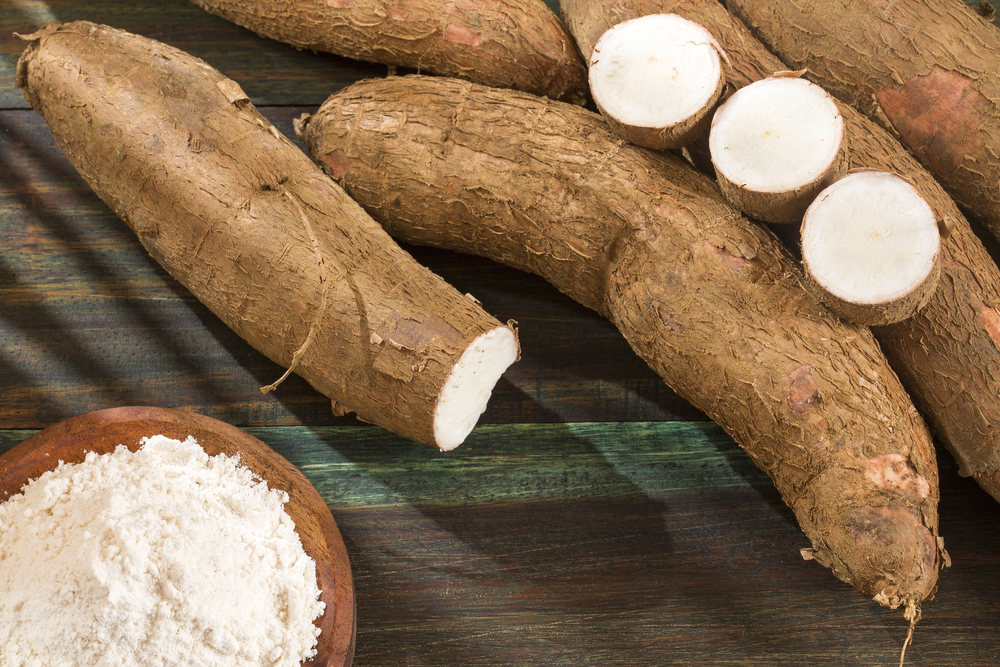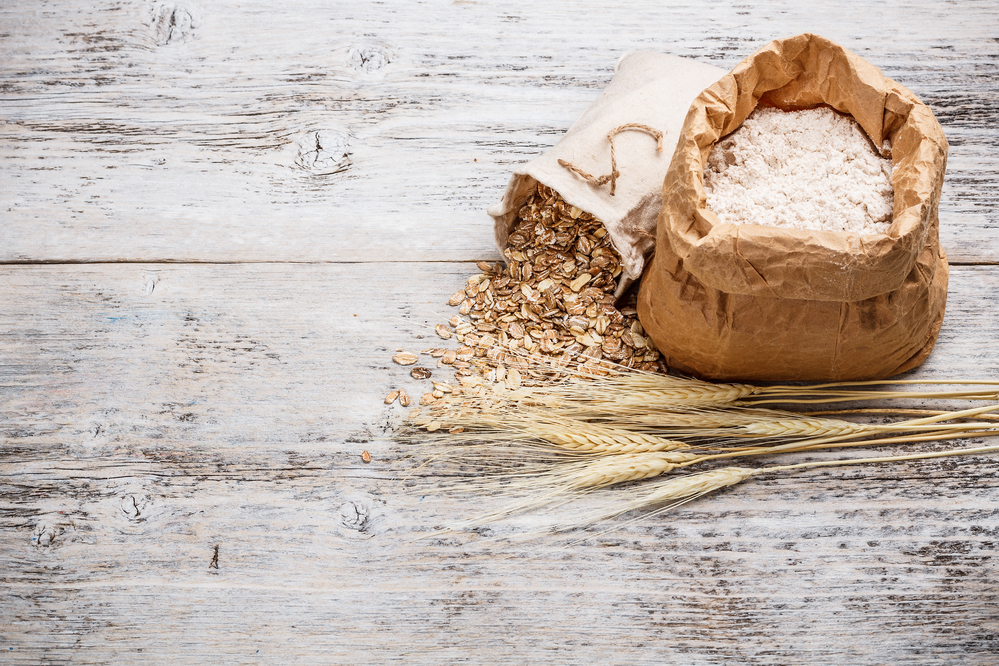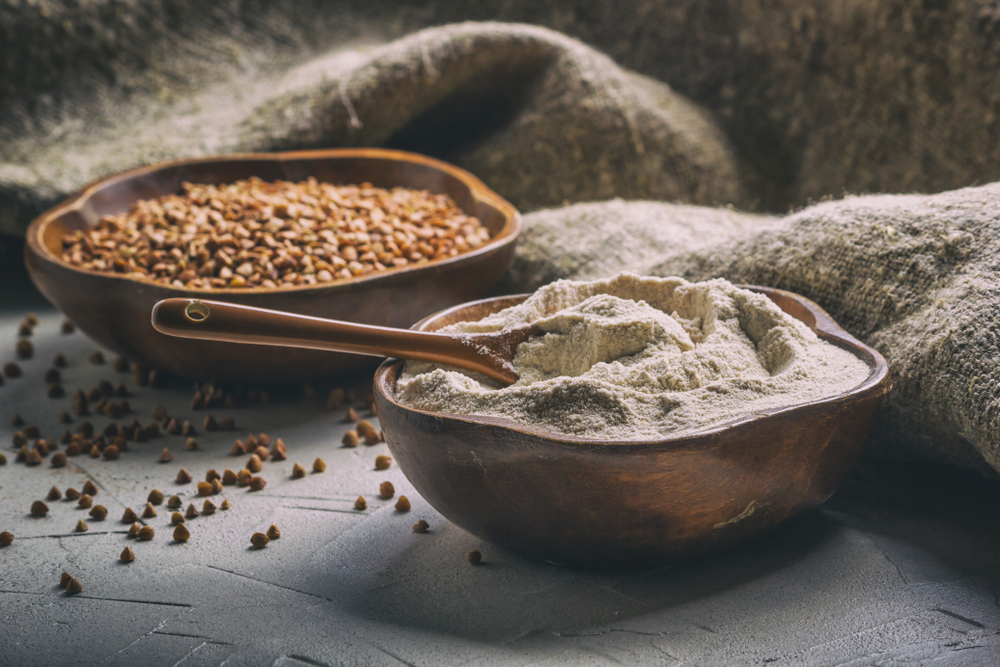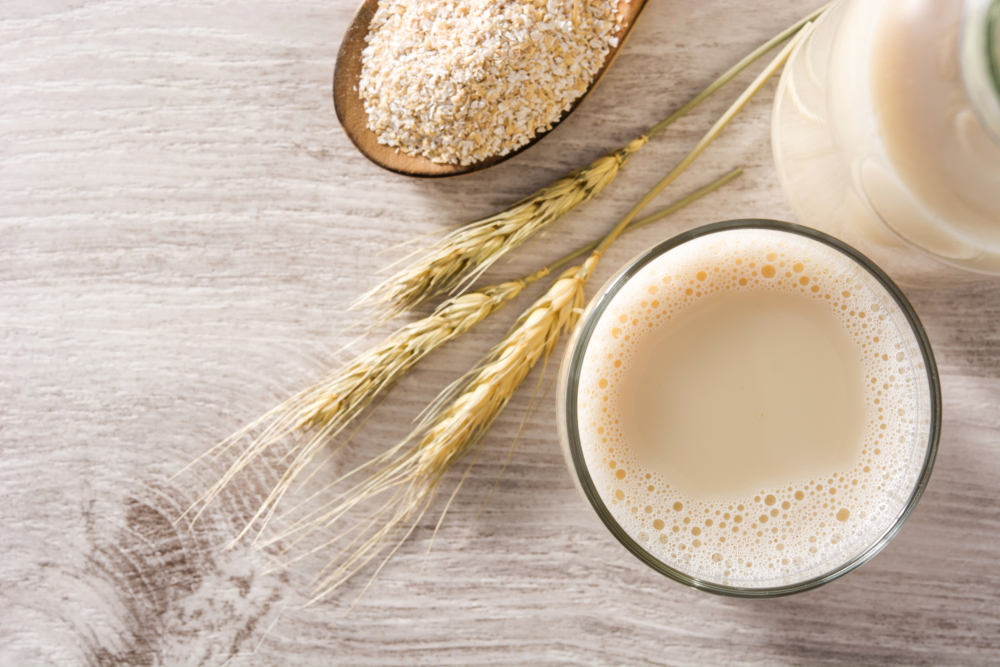Sorghum flour is a popular alternative to wheat flour for those who prefer to, or need to, bake gluten-free. It is a healthy choice that still has a decent flavor. One downside of using sorghum flour is that it can be difficult to locate.
If you don’t have any sorghum flour available to you, there are a handful of other types of flour that can be used for gluten-free baking.
As a replacement for sorghum flour, you could try: buckwheat flour, almond flour, tapioca flour, rice flour, coconut flour, oat flour, amaranth flour, corn starch, xanthan gum, quinoa flour, or millet flour.
What is Sorghum Flour Good For?
Sorghum flour is a perfect wheat flour replacement for those who have intolerances to gluten, or prefer to avoid it. It can be used in virtually anything that wheat flour would be used in, such as pancakes, bread, baked goods, and even beer.
It also provides more nutrients than regular white flour does, including more vitamin B12 and iron. Like wheat flour, sorghum flour can be treated as an all-purpose flour and can be substituted for flour that has gluten at a one to one ratio.
What Does Sorghum Flour Do in Baking?
The reason that sorghum flour is a popular replacement for wheat flour in baking is because they serve nearly identical purposes. This purpose would be helping the dough rise properly and enhancing the texture. Many people agree that sorghum flour even tastes like wheat flour.

Wheat flour is used as a binding ingredient in baking. Sorghum flour has a similar use, though often another binding ingredient is needed. It reaches its maximum potential when combined with other flours that are gluten-free, but can make wonderful breads and other baked goods.
What Can I Substitute Sorghum Flour With?
There are a decent amount of substitutes for sorghum flour that can reap the same benefits. You may even find it surprising if you aren’t too well-seasoned when it comes to baking gluten-free foods. Below are some of the best sorghum flour replacements.
1. Buckwheat Flour
If you’re searching for a replica of sorghum flour, buckwheat flour comes pretty close. They are extremely similar when it comes to their nutritional profiles and textures. A bonus of using buckwheat flour is that it is high in indigestible fiber, which promotes colon health.
In addition, buckwheat flour has a high acid content and also contains manganese. The combination of these two elements means that buckwheat flour can help you establish a better metabolism.
Although buckwheat flour has “wheat” in its name, this flour does not contain wheat. Like sorghum flour and the others on this list, buckwheat flour is entirely free of gluten and safe to consume for people with gluten allergies or sensitivities.
2. Almond Flour
The flavor of almond flour is more noticeable than many other flours, as it has a nutty taste. Its taste also has subtle notes of sweetness and it is a fantastic binding agent for baking. This makes almond flour a great choice for baking many things, including bread.
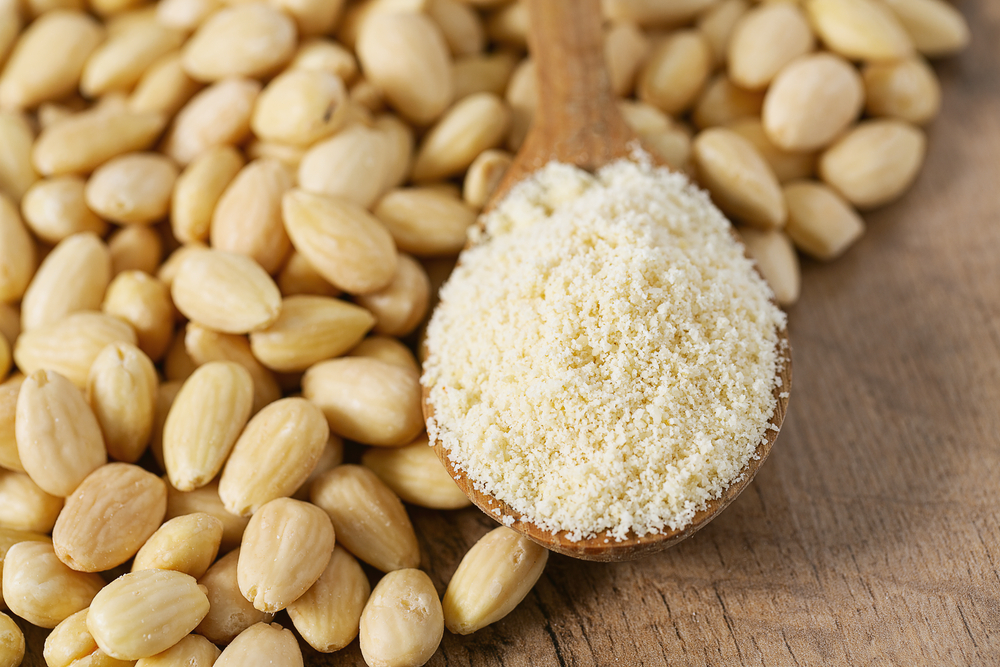
Almond flour can also make your dough softer and more moist because of its natural oils. When using it as a replacement for sorghum flour, substituting at a one to one ratio will work. In addition to being gluten-free, almond flour is dairy-free and friendly to those who follow paleo diets.
If you aren’t sold on almond flour yet, it has a great nutritional value. It is high in vitamin E, which has been shown to have antioxidant properties. Almond flour also contains magnesium, which can help with regulating blood sugar levels. In addition, it is low in both carbs and calories.
3. Tapioca Flour
Tapioca flour is derived from cassava roots and is actually a type of starch, so you may find that it is more cost efficient than other sorghum flour substitutes. It works perfectly as a binding ingredient, so you will benefit from using it in breads.
Tapioca flour also works as a thickening agent. This is good news especially if you are making soups or gravies, but be careful not to use too much of it. Using too much tapioca flour can result in soup that is both sticky and runnier than you’d probably like.
4. Rice Flour
Rice flour is another viable sorghum flour replacement to consider. Using rice flour in a recipe will often leave you feeling lighter than using other flours would. This flour is derived from the endosperm of rice grains. Its texture is similar to sorghum flour, so a one to one ratio works.
The light and fluffiness of rice flour is resemblant to that of carbs, but rice flour has a lower glycemic index, making it healthier. It is very versatile and can be used in pretty much any recipe, but it tends to give a lumpy, grainy, texture to baked goods.
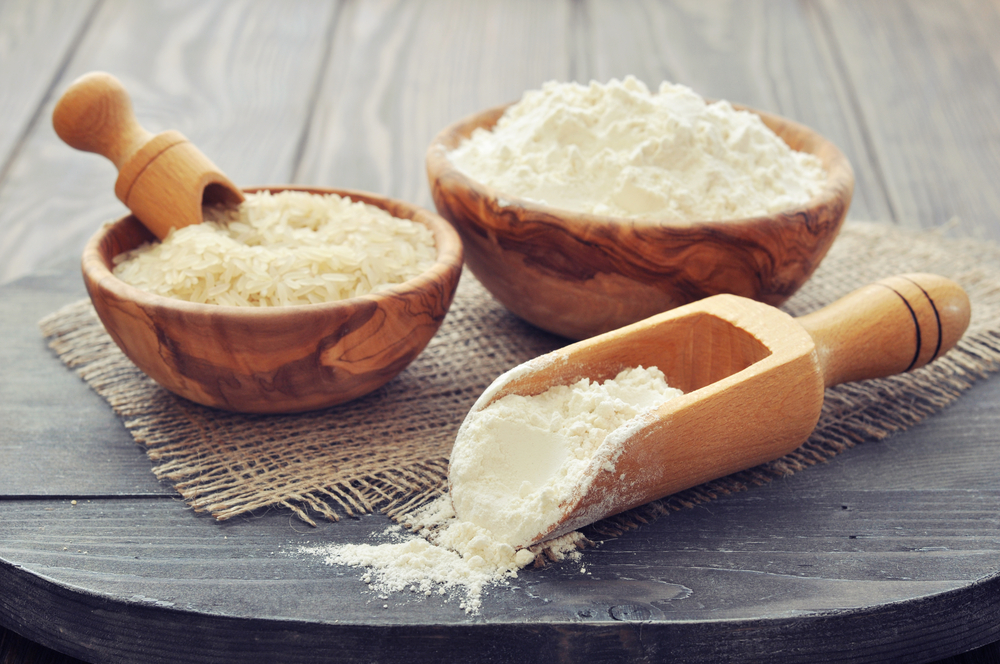
Because of this, rice flour is best used in combination with other gluten-free flour alternatives. A bonus of rice flour is that it’s widely available. You’ll likely find two varieties; white and brown. Brown rice flour is the healthier option as it is rich in fiber and undefined.
5. Coconut Flour
Gluten-free coconut flour is also a healthy substitute for sorghum flour. It is very low in carbs, which causes it to promote heart health and digestion. Coconut flour can also lower cholesterol levels in your body.
A special ingredient in coconut flour is lauric acid, which can strengthen your overall immunity. It can also moisturize skin and prevent peptic ulcers from forming in the inner linings of your stomach. It has a minor difference in flavor, but nothing too noticeable. It can be substituted for sorghum flour at a one to one ratio.
6. Oat Flour
Oat flour is certified gluten-free, and pretty similar to sorghum flour. It tastes similarly and can also be used for various baking purposes, at a one to one ratio. Oat flour should also be easily available at your nearest grocery store.
Because it is gluten-free, it will help your body maintain healthy levels of blood sugar. Oat flour also can sustain weight loss, as it will keep you feeling fuller for longer periods of time.
7. Amaranth Flour
The protein and fiber contents are both considerably high in amaranth flour, making it a nutritious substitute for sorghum flour. It can be very versatile, and often works as an all-purpose flour.

When using it as a replacement for sorghum flour, you’ll likely need to go through some trial and error to find the perfect amount for your recipes. One thing to note is that amaranth flour absorbs more liquid in comparison to other flours that are free of gluten. So, adding more liquid to your dough is a good idea when using amaranth flour.
8. Corn Starch
Corn starch is made from the kernels of corn that are ground into a powder. More often than it is used for baked goods, it is used as a thickener for gravies and sauces. This is the best sorghum flour replacement for things other than baked foods.
Upon combining corn starch with water, a gooey, stretchy substance is the result. This is used to make slime and multiple other toys. It is also used in miscellaneous other products, such as makeup and laundry detergent. The household staple has many purposes, and certainly can be used in place of wheat flour, but typically isn’t the first choice of sorghum flour replacements.
9. Xanthan Gum
As one can assume from its name, xanthan gum is not a flour, but it can serve a similar purpose that flours do. Xanthan gum is made from fermenting a type of bacteria, Xanthomonas campestris, over sugar. When using it in baked goods, it binds ingredients perfectly.
Xanthan gum is also known for making products more elastic, and can even increase the volume. For example, using xanthan gum in your muffins or cakes will make them very fluffy. It is a little different in terms of quantity, as it is not a flour.

To use xanthan gum in your recipes, add ½ teaspoon to every one cup of gluten-free flour. You can use any other sorghum flour replacement along with xanthan gum.
10. Quinoa Flour
Quinoa flour has not been readily available on the market for as long as other types of gluten-free flour. However, you’ve probably heard of quinoa before, which has an impressive nutritional profile and is even considered to be a superfood.
The flour could be made from either white or red quinoa, the colors of which will show in the appearance of the flour. It is very high in fiber, protein, and nearly entirely free of gluten. As for the taste, some people say quinoa flour is bitter.
Often, the bitterness is not noticeable unless you have super sensitive taste buds. Nonetheless, it can be combated with some sugar or honey.
11. Millet Flour
Millet flour is very similar to sorghum flour in numerous ways. For one, both flours are made of cereal grains that are gluten-free and grown in warm climates. Millet flour has a very mild and neutral taste, which won’t show up much in your end result.
In addition to being gluten-free, millet flour is healthier than wheat flour in many ways. It contains six times the amount of fiber that wheat flour does, which will keep you full for longer. It also has antioxidant properties and promotes good heart health while regulating blood sugar.
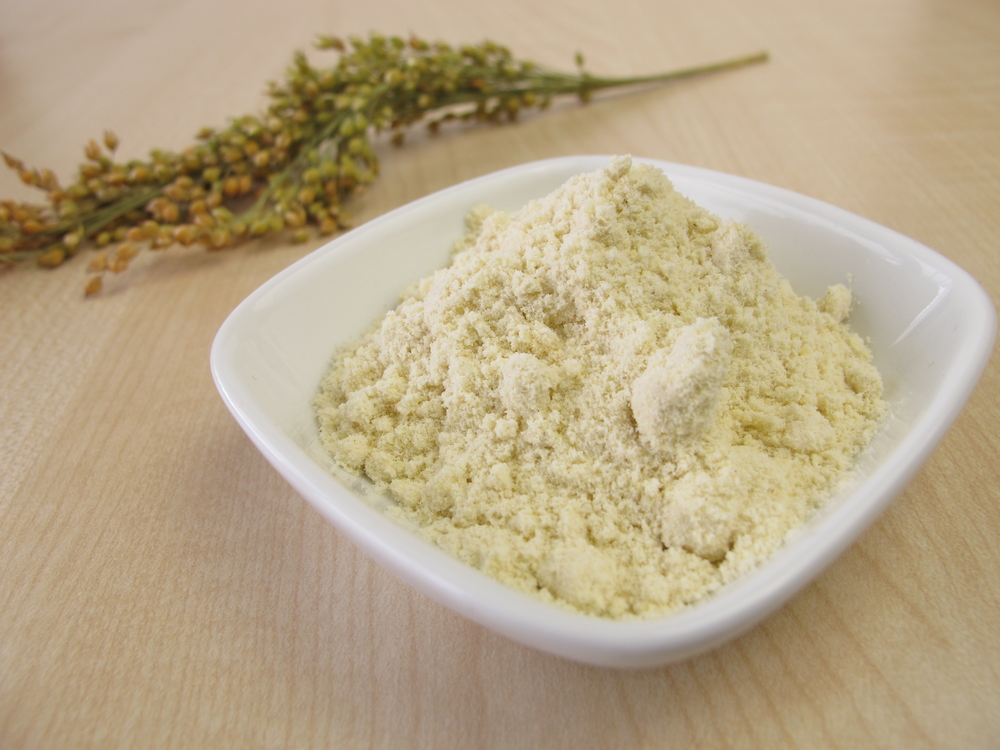
12. Teff Flour
Teff flour is a relatively new flour to the Western world, but it has been a staple in African countries for thousands of years. The ancient cereal grain of teff is used to make flour, which is high in protein and free of gluten.
Because of its high protein content, teff flour is a good contender for making pasta in particular. Its texture is more grainy than some other flours and it is light brown in color. These elements will somewhat affect how your food turns out, so use with caution.
13. Garbanzo Flour
Chickpea flour, or garbanzo flour, is a perfect binding agent and also absorbs moisture well. It shouldn’t be used as an all-purpose flour, but is great for things like waffles or pancakes. Garbanzo flour can also be used as a gluten-free flour for deep-frying foods.
The reason it isn’t a great all-purpose flour is that garbanzo flour tastes stronger than most other flours, and takes longer to cook. If you don’t cook garbanzo flour for long enough, your end result will taste more bitter than you’d like.
14. Potato Flour
Potato flour is another gluten-free flour, but is less expensive than its competitors. The reason for this is more than likely that potatoes are a very common and accessible food. One thing to remember about potato flour is that it has a high starch content, meaning it will affect the texture of baked goods.
It is very dense, so using a smaller amount than you would of sorghum flour is best. However, also because of its density, potato flour is a great thickener. When using it as a replacement for sorghum, you’ll want a small amount of potato flour along with another gluten-free flour.

FAQs
Can sorghum cause bloating?
When consuming sorghum flour, you aren’t too likely to experience bloating. This is because of the lack of gluten and higher amounts of nutrition such as fiber. The same is true about many of the substitutes for sorghum flour.
Does sorghum flour cause constipation?
You’ll be pleased to hear that sorghum flour does the opposite of causing constipation. It is a great digestive aid, and can prevent constipation, as well as bloating, cramping, and other issues that come from an upset stomach.
Does sorghum flour have gluten?
Sorghum flour is entirely gluten-free. It can act the same way as wheat flour does in cooking or baking, but because it contains no gluten, it is popular in gluten-free cuisine.
Conclusion
Sorghum flour is a popular alternative to wheat flour, and is loved by people who cannot or prefer not to consume gluten. If you have no sorghum flour available to you, the good news is that there are plenty of other sufficient gluten-free flours.




